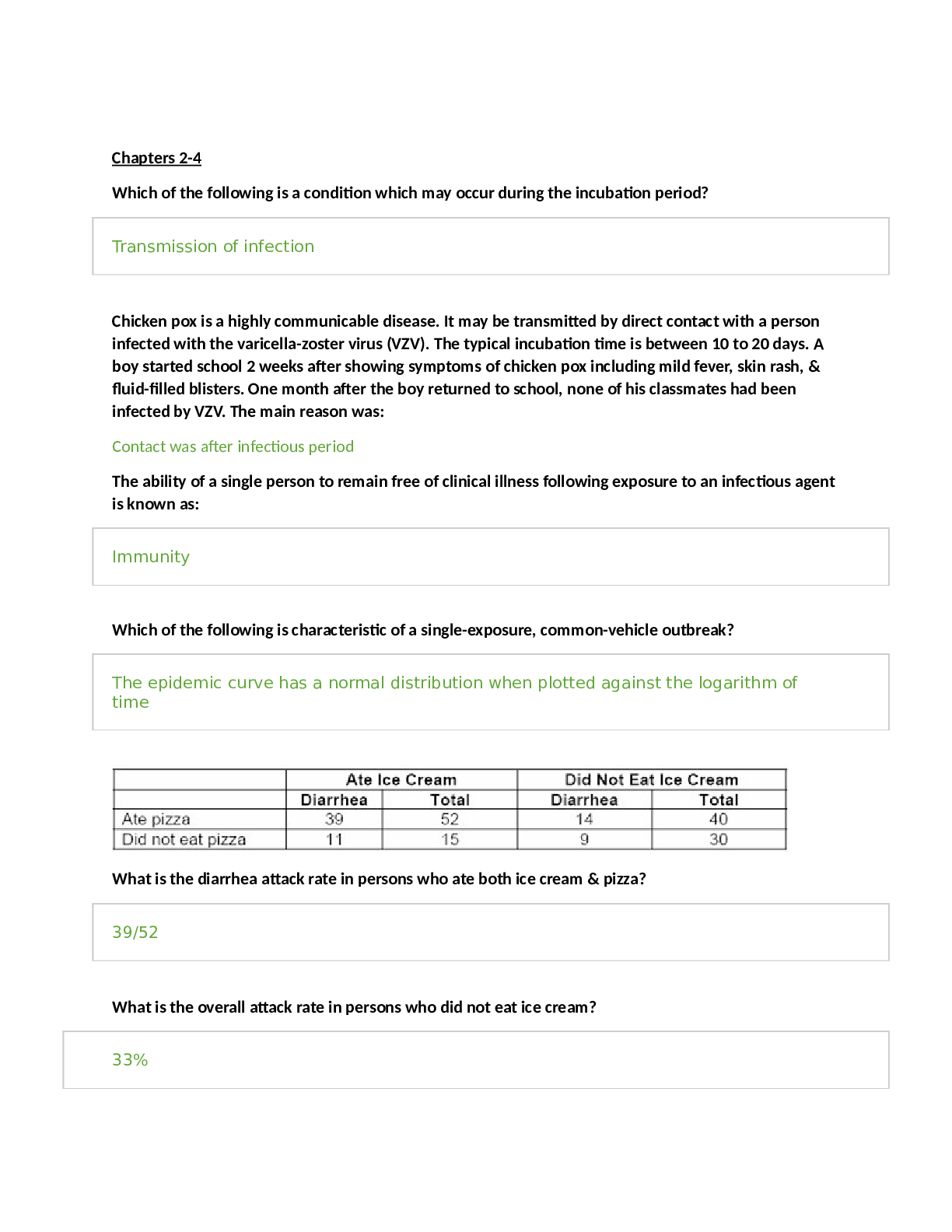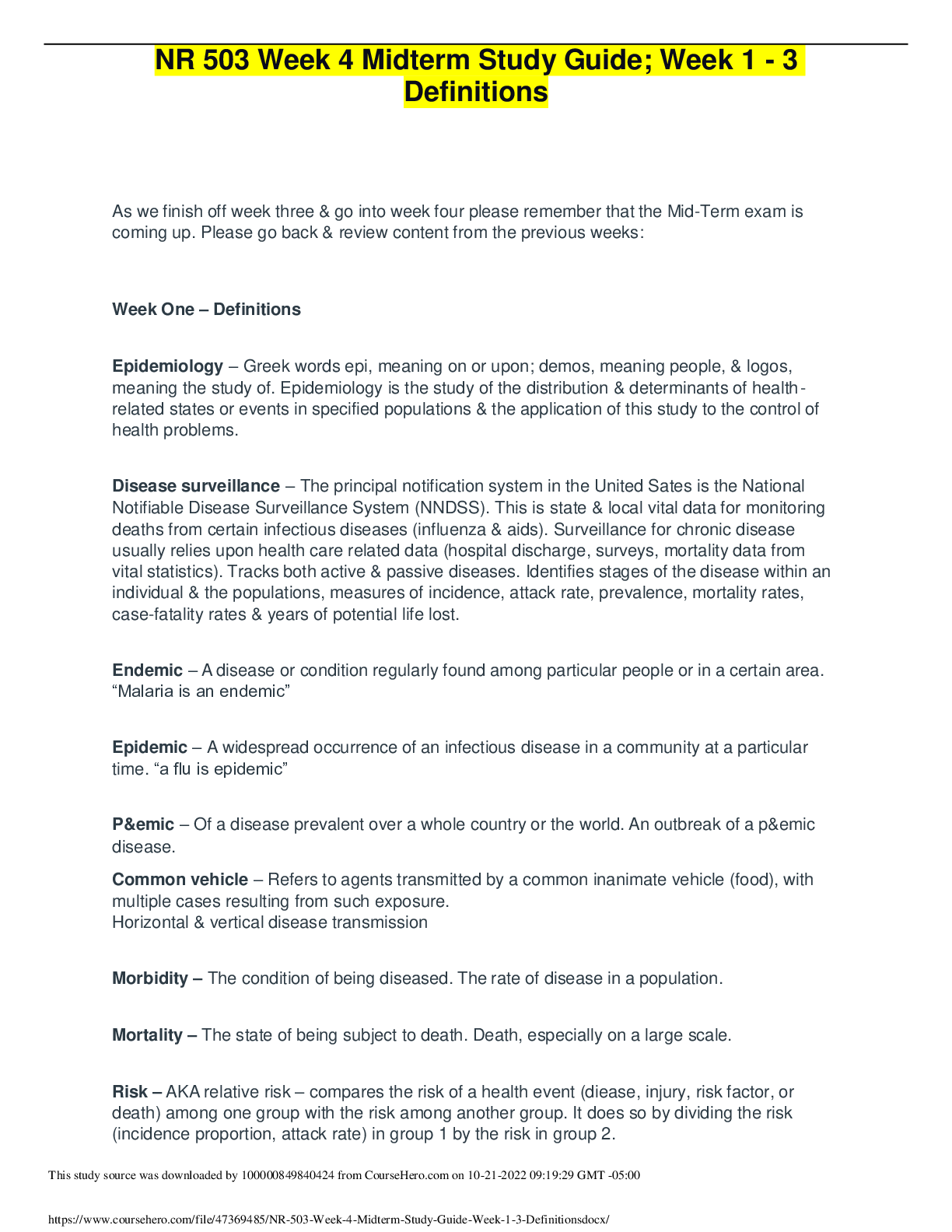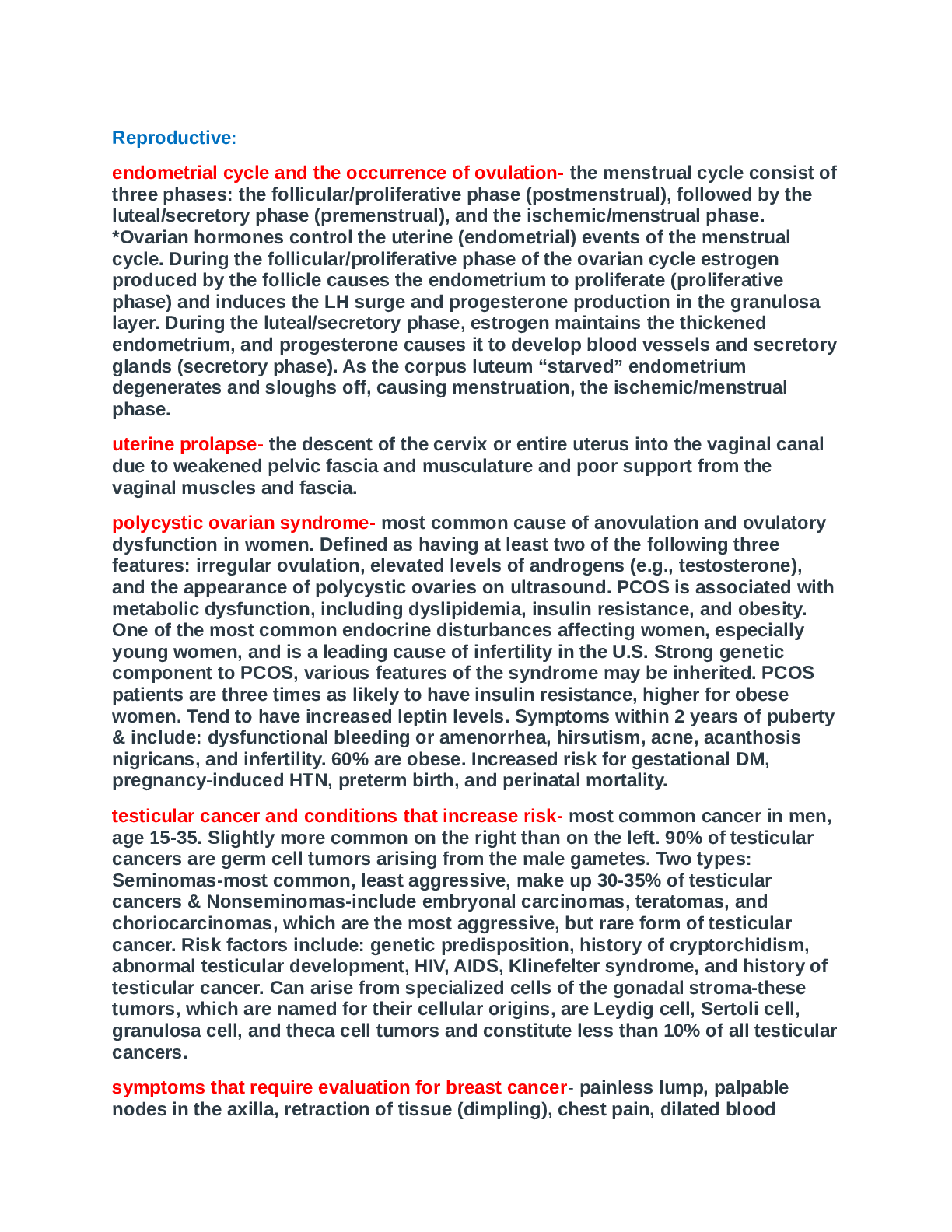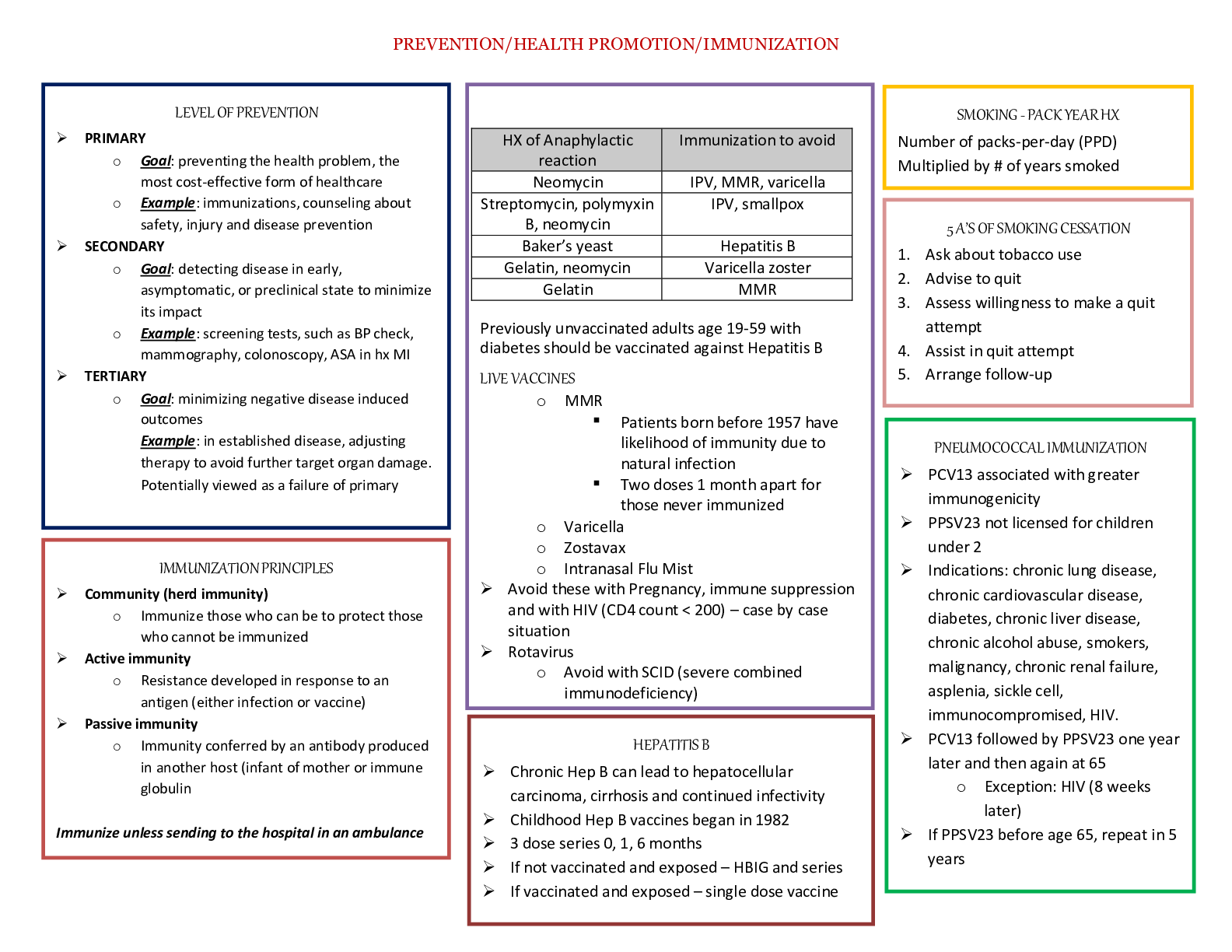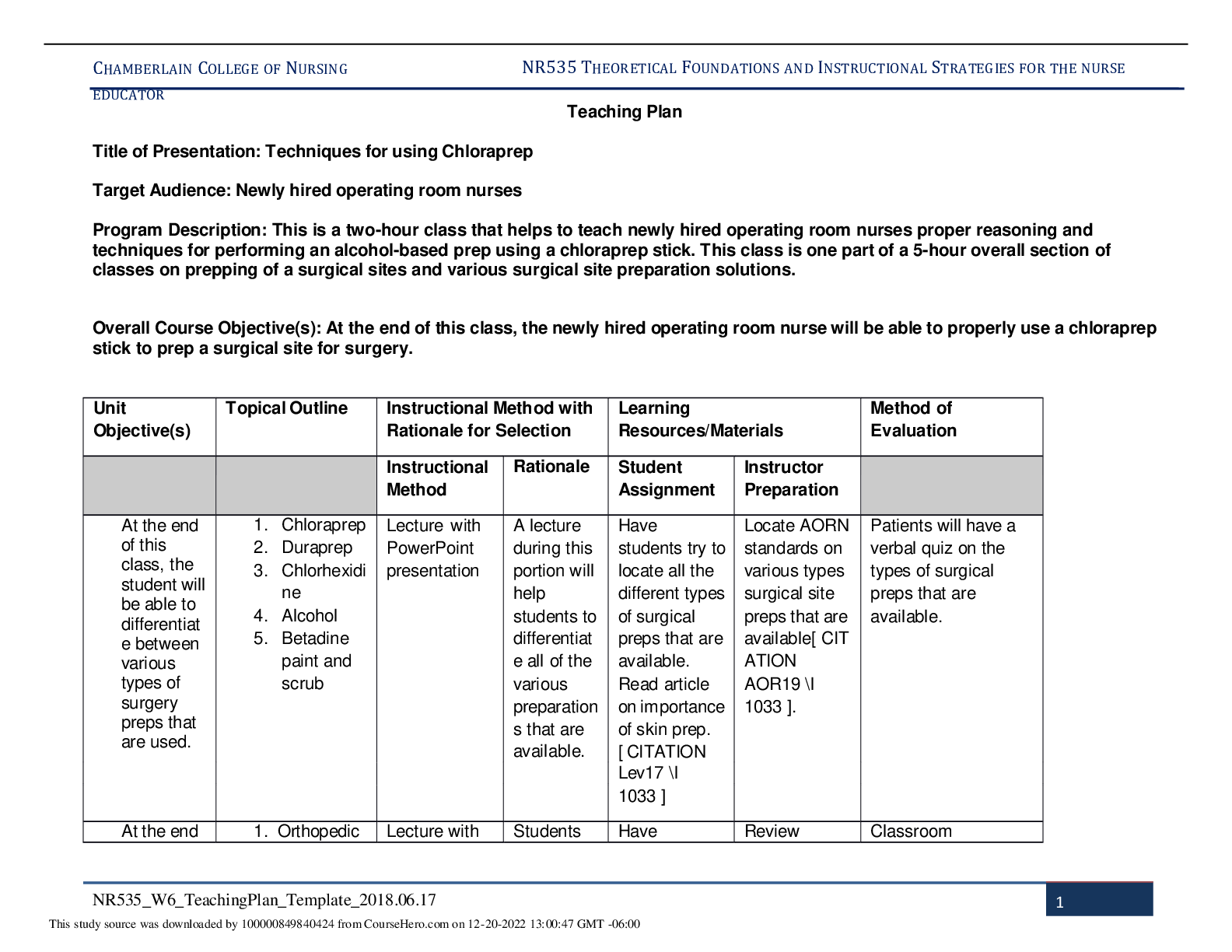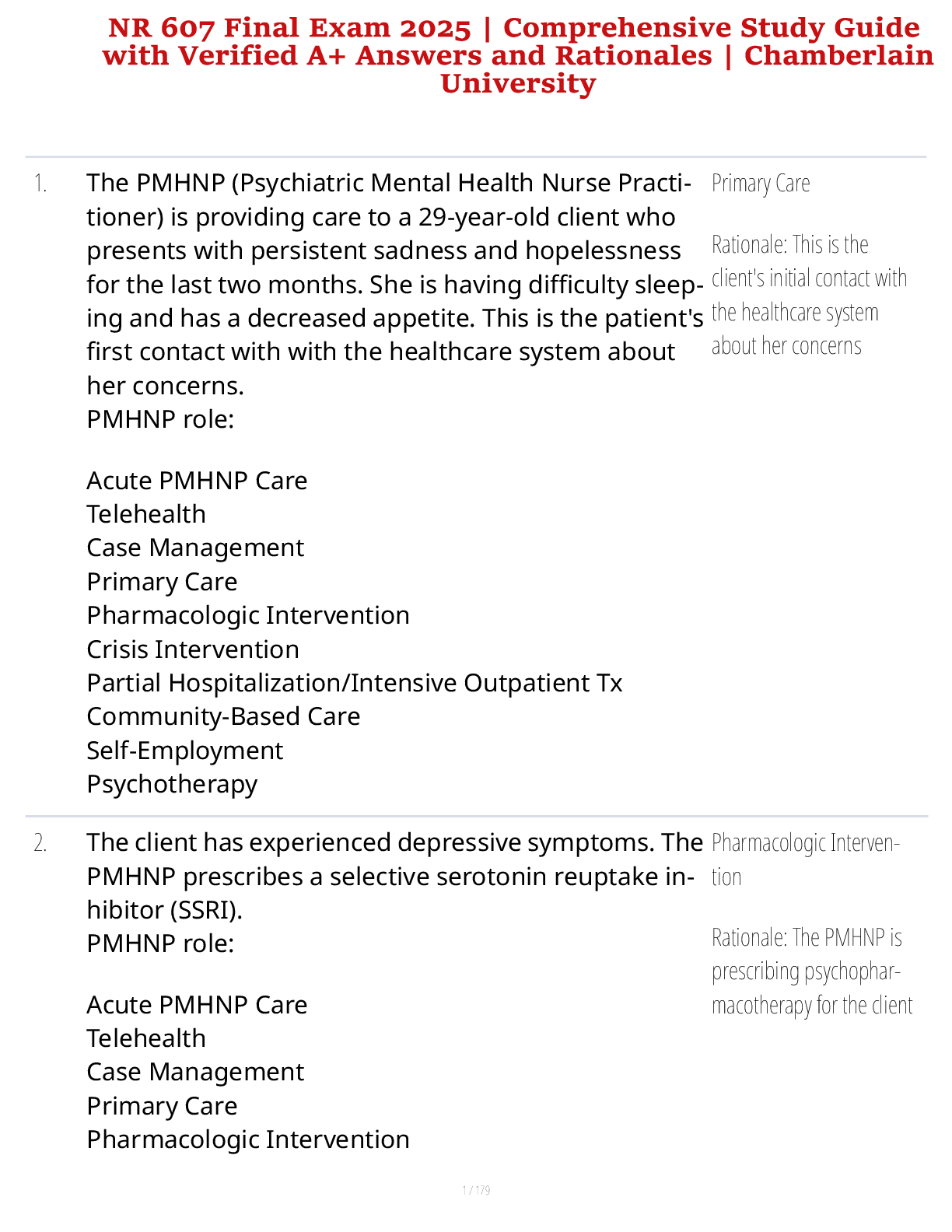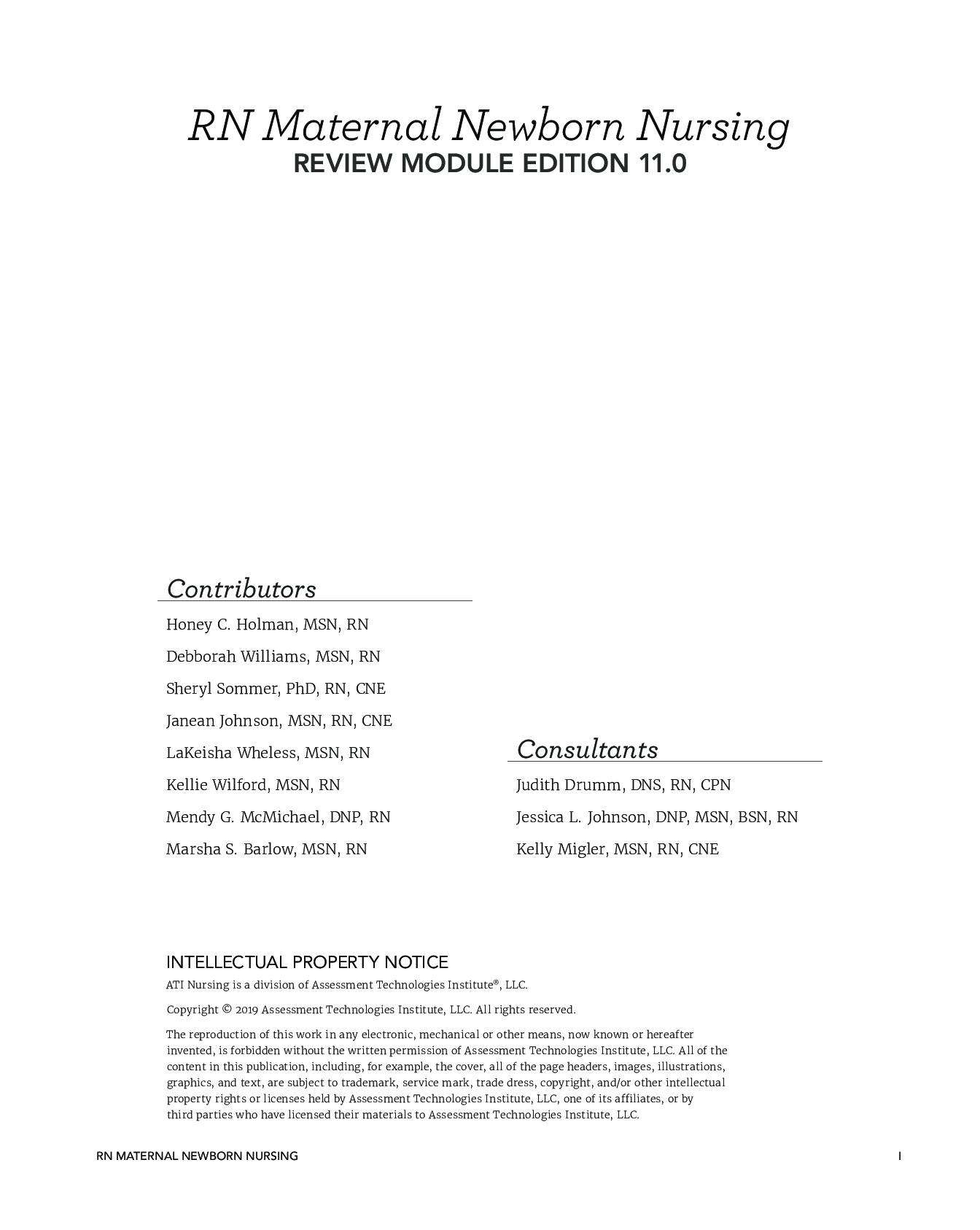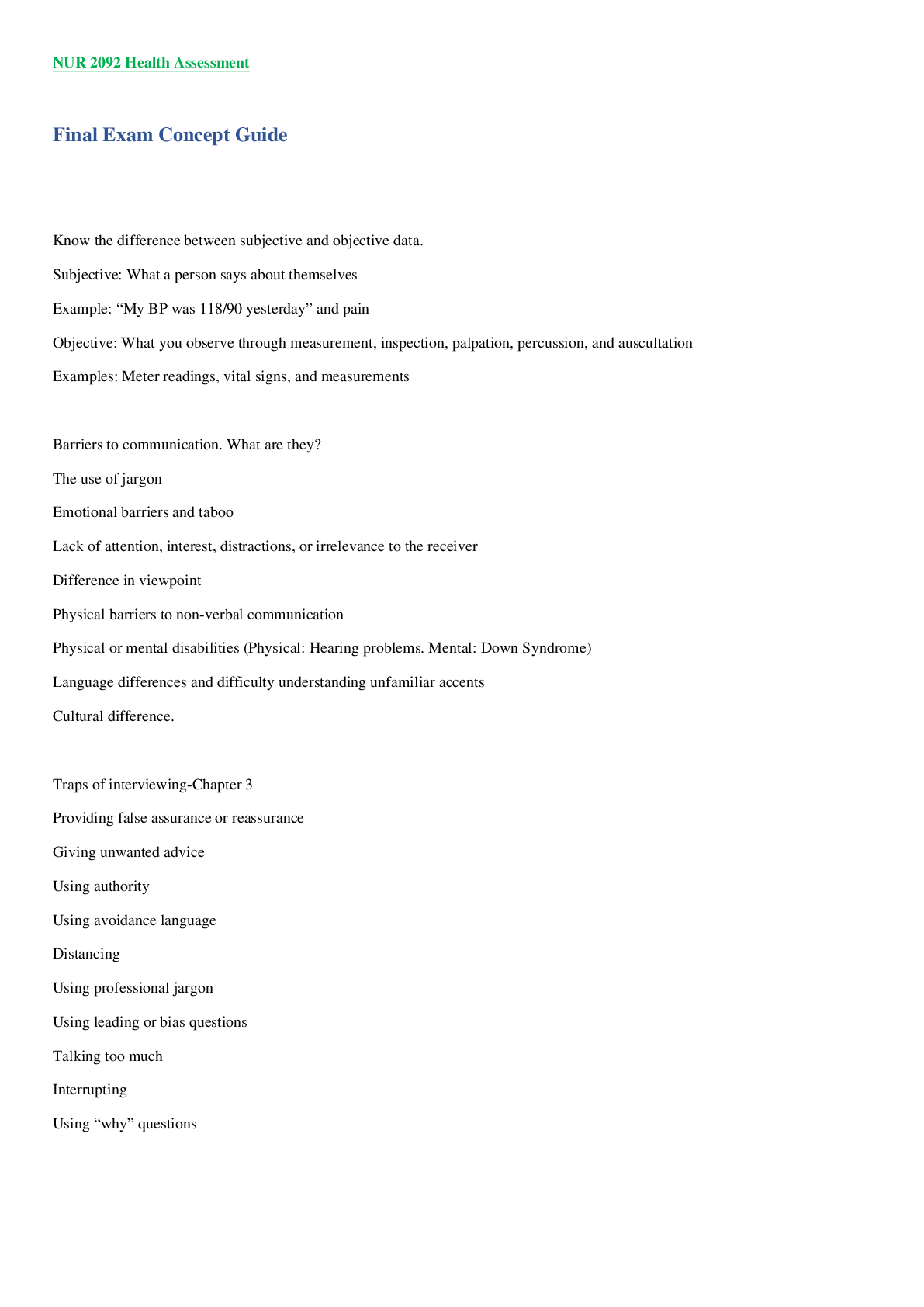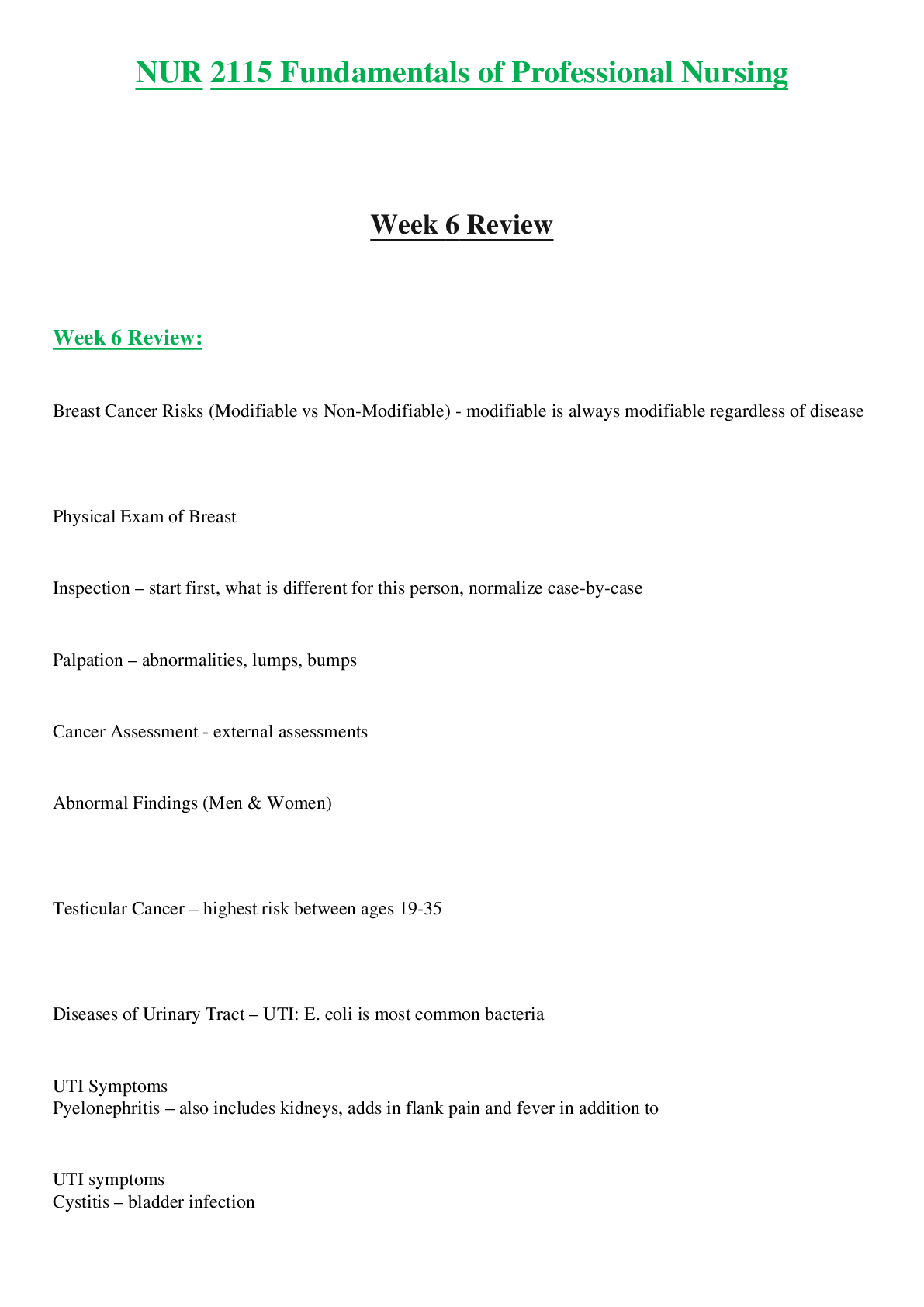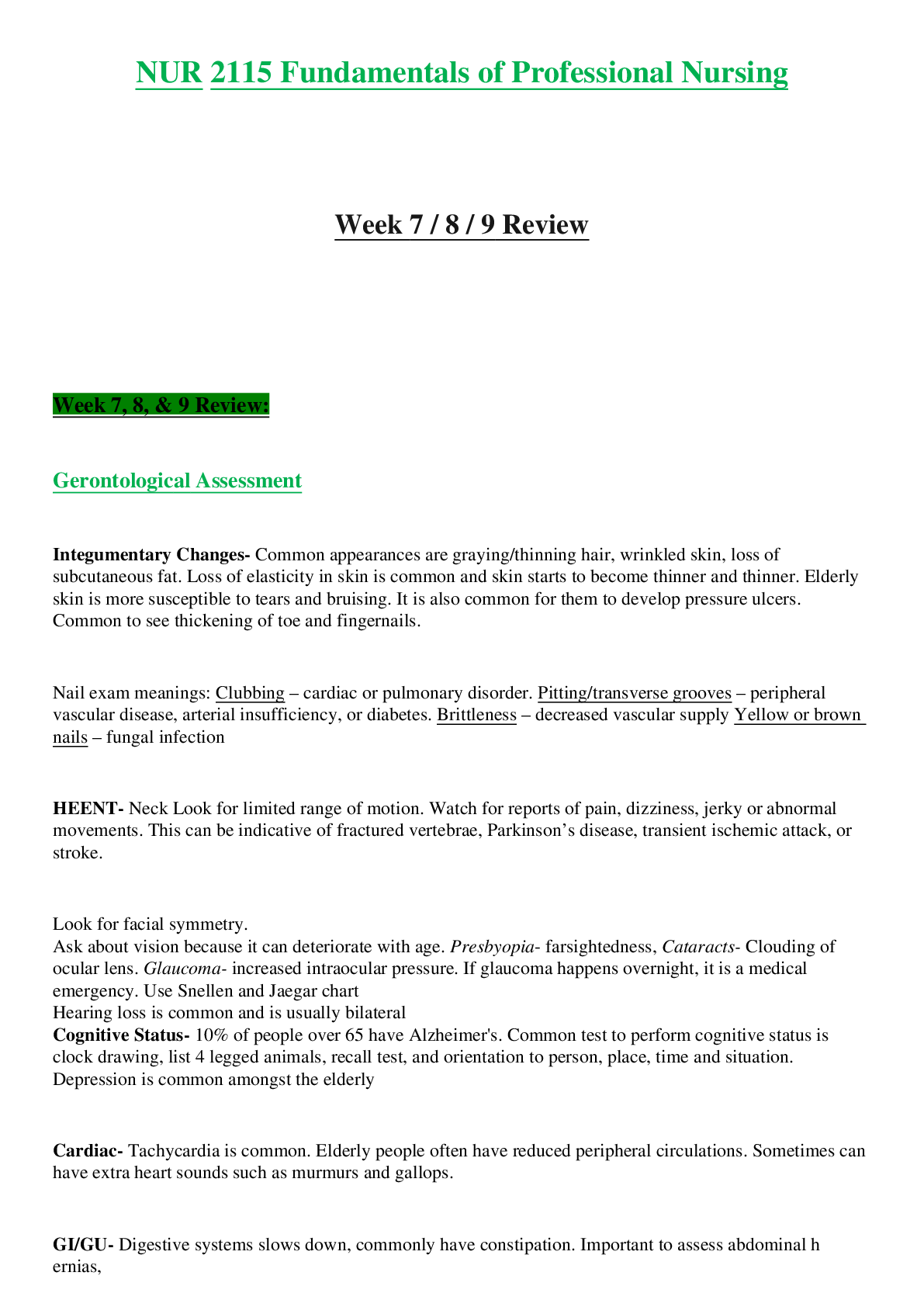NAFI CFEI > STUDY GUIDE > NAFI CFEI Study Guide (Download To Score An A) (All)
NAFI CFEI Study Guide (Download To Score An A)
Document Content and Description Below
Evidence - Demonstrative Tangible items; see, touch, smell, hear. Evidence - Documentary Written form; business records, banking, calendars, phone records, fire reports, etc... Evidence - ... Testimonial Competent live witness speaking under oath; two types; fact and expert Evidence - illustrative Photos, sketches, maps, diagrams. Modes are frequently used at trial. Evidence - illustravtive Photos and Videos; what, why, how, when Evidence collection Document in place, document the collection, use proper container, (flag, bag, & tag) Evidence - collection Fuel gas powered tools outside the perimeter. Find out where tools were refuels. Heat transfer Conduction, convection, radiation Interviews Purpose of the interview; prepare for the interview, document the interview Vehicle Fires Sparks from an aluminum wheel are not a competent ignition source. Vehicle Fires The most common source of an open flame in a vehicle is an exhaust system backfire out of a carburetor. Vehicle Fires Carburetor backfire leaves a distinct pattern on the hood. Vehicle Fires Two basic fuel systems: vacuum/low pressure carbureted system, and high-pressure, fuel injected system. Vehicle Fires Loose battery connections; not over-current protected; loose connections can result in intermittent arcing. Vehicle Fires Power steering fluid: Flashpoint 347-356F, autoignition 680-720F. Vehicle Fires Automatic Transmission Fluid: Flashpoint 302-536F, autoignition 626-716F. Vehicle Fires Overcharging a battery does not cause it to explode. Explosions Low order damage: characterized by walls bulge out or laid down, virtually intact, next to the structure. roofs slightly left. Explosions High order damage: shattering of the structure, producing small debris pieces. Explosions Post blast effects: burned debris away-fire preceded, unburned the debris away-no fire. Explosions Dust explosions: most often occur in confined areas of relatively wide dispersal. Explosions Search 1.5 times further than the farthest piece of debris. Fire effects/ fire patterns Char shrinks as it forms. More reliable for evaluating fire spread, deduce the direction based on depth, large shiny blisters (alligatoring) is not evidence of the use of an accelerant. Fire effects/fire patterns Spalling: loss of surface material due to cracking, breaking, chipping, breakdown in surface tensile strength, moisture present in the concrete, may appear lighter in color. Fire effects/fire patterns Crazed glass: caused by rapid cooling. Fire effects/fire patterns Light bulbs 25W or more "pull" (gases expand and bubble out); 25W or less contain a vacuum and can pull in. Fire effects/fire patterns Annealing (softening) of springs may provide clues concerning direction, duration, and intensity. Fire effects/fire patterns Saddle burns - A U-shaped burn pattern found on the top of floor joists, caused by fire burning down through the floor. Often, a saddle burn is caused by a burning liquid on the floor or radiant heat from a material close to the floor. Saddle burns display deep charring. Fire effects/fire patterns Inverted cone burns are indicative of the vertical flame plume not reaching the ceiling, short-lived fires with a low HRR Fire effects/fire patterns Melting Temperatures: Copper 1981F; Aluminum 1220F; Steel 2760*F Heat Sources Mechanical: converted to heat when two materials rub against each other and create friction. Chemical: chemical reaction; exothermic and endothermic. Electrical: Converted to heat energy; flowing through a conductor. Nuclear: splitting the nucleus of an atom into two smaller nuclei (nuclear fission) Electrical Resistance Heating: properly installed, produces low resistance. Loose connections: high resistance with increased heating at the contact. Electrical Ground Fault: the purpose if grounding an electrical system is to make sure that any housings or exposed metal in the system or connected to it cannot become electrically charged. Electrical Sleeving: the softening and sagging of thermoplastic conductor insulation due to the heating of the conductor. Electrical Lightning: a form of static electricity, a polarized electrostatic charge in the clouds. Electrical 9.2.2.2.2: the unit of measurement of potential difference or voltage is usually volts. Electrical 9.2.2.3: the rate of charge flow is called electrical current, and current is measured in amperes. Electrical 9.2.6.1: power - the rate at which energy is used. Electrical 9.3.3: the cables of a service drop go into a weather-head, which is designed to keep water from entering the system, and then down a service raceway to a meter base. Electrical 9.6.2.1: fuses are basically non-mechanical devices with a fusible element in a small enclosure. Electrical 9.6.3.1: a circuit breaker is a switch that opens either automatically with over-current or manually by pushing a handle. Electrical 9.7: Branch Circuits: the individual circuits that feed lighting, receptacles, and various appliances are the branch circuits. Electrical 9.9.4.1: Arc: is a high temperature luminous electric discharge across a gap or through a medium such as charred insulation. Electrical 9.10.3: Arcing through a carbonized path due to thermal means (arcing through char), insulation on conductors, when exposed to direct flame or radiant heat, may be charred before being melted. That char is conductive enough to allow sporadic arcing through the char. Fatalities Charred bones are an indication of fire intensity and duration Fatalities The Pugilistic posture is as a result of the muscle dehydrating and shrinking, shrinkage causes flexion Fatalities Humans do not spontaneously combust Miscellaneous Hire a FPE to examine a flow valve, EE for a toaster, Mechanical Engineer for a furnace and a metallurgist for metal issues Miscellaneous Do not put field notes in the investigative report Miscellaneous Polyethylene chair has a higher HRR than a pool of gasoline or a Christmas tree Miscellaneous A pathologist should exam a fractured skull Miscellaneous Main breaker is the safest way to de-energize a house Miscellaneous Fill the evidence can only 2/3 full Miscellaneous Annealed (softening) springs can indicate duration and intensity Miscellaneous An autopsy should always be performed Miscellaneous Witnesses can only testify to facts observed Miscellaneous Identify interview question types according to the priority that they should be asked Miscellaneous Vapor density of <.6 will rise to the ceiling and accumulate Miscellaneous Oxidation is the basic chemical reaction associated with combustion Miscellaneous Add more oxygen and expect color change and change of texture Thermal Inertia Thermal conductivity(k), density(p), heat capacity (c) Latent heat of vaporization The heat absorbed when a substance changes phase from a liquid to a gas. No change in chemical structure of the material Flameover Unburned fuel from the originating fire accumulates in the ceiling layer to sufficient concentration that it ignites Flashover A transition phase in the development of a compartment fire in which surfaces exposed to thermal radiation reach ignition temperature more or less simultaneously Backdraft A deflagration resulting from the sudden introduction of air into a confined space containing oxygen-deficient products of incomplete combustion Boiling Point Temperature at which the vapor pressure of the liquid equals the pressure surrounding the liquid and the liquid changes into a vapor. Burning Point The lowest temperature at which a volatile oil in an open vessel will continue to burn when ignited by a flame held close to its surface; used to test safety of kerosene and other illuminating oils. Clean Burn A distinct and visible fire effect generally apparent on non-combustible surfaces after combustible layers (soot, paper, paint)have burned away Combustion A chemical process of oxidation that occurs at a rate fast enough to produce heat and usually light in the form of either a glow or flame Calcination A fire effect realized in gypsum products, including wallboard, as a result of exposure to heat that drives off free and chemically bound water Fire A rapid oxidation process, which is a chemical reaction resulting in the evolution of light and heat in varying intensities Fire Plume Creation of hot gases by fire; the hot gases rise above the fire itself Flame Spread Classified as concurrent or counterflow: concurrent-(wide-aided flame spread) occurs when flame spread direction is the same as the gas flow or wind direction; counterflow-(opposed flame spread) occurs where the flame spread direction is counter to or opposed to the gas flow Heat a form of energy characterized by vibration of molecules and capable of initiating and supporting chemical changes and changes of state Ignition Temperature Minimum temperature a substance should attain in order to ignite under specific test conditions Lower Explosive Limit (LEL) The minimum percentage of fuel in air (by volume) in which combustion can occur Upper Explosive Limit The maximum percentage of fuel in air in which combustion can occur Melting Point Phase change; the material changes from a solid to a liquid with no change in the chemical structure of the material (melting candle wax) Pyrolysis A process in which material is decomposed, or broken down, into simpler molecular compounds by the effects of heat alone; pyrolysis often precedes combustion Specific Gravity (Vapor Density) The ratio of the average molecular weight of a gas or vapor to the average molecular weight of air Specific Gravity The ratio of the mass of a given volume of a substance to the mass of an equal volume of water at a temperature of 4*C Combustible Liquid Flash Point @ or above 100°F Flammable Liquid Flash Point less than 100°F Ignitable Liquid Both combustible and flammable liquids are ignitable liquids. Flash Point Momentary Flame; the lowest temperature at which vapors will ignite. Measuring a flash point requires an ignition source. At the flash point, the vapor may cease to burn when the ignition source is removed. Accelerant Can be any material to spread fire; usually gasoline. Origin Determination 1. Witness Information 2. Fire Patterns 3. Arc Mapping 4. Fire Dynamics Ceiling Jet Obstruction to plume at ceiling level creates ceiling jets. Thermal Inertia The degree of slowness with which the temperature of a body approaches that of its surroundings and which is dependent upon its absorptivity, its specific heat, its thermal conductivity, its dimensions, and other factors High Order Explosion A high order explosion describes an explosive event where the blast pressure front moves rapidly, shattering objects in its path. High order damage: shattering of the structure, producing small debris pieces. High Explosive A high explosive is a material that has an explosion velocity of greater than 1000 m/s, or a material capable of sustaining a detonation Low Order Explosion A low order explosion describes an explosive event where the blast pressure front moves slowly, displacing or heaving (rather than shattering) objects in its path. Low order damage: characterized by walls bulge out or laid down, virtually intact, next to the structure. roofs slightly left. Low Explosive A low explosive is a material that has an explosion velocity of less than 1000 m/s. True - Administrative Warrant Probably cause IS NOT NEEDED to obtain an ADMINISTRATIVE search warrant. Conduction Heat transfer to another body or within a body by DIRECT contact. Pre-Flashover conditions In pre-flashover conditions, the primary heat transfer mechanism for fire spread through a compartment is conduction. Conduction Heat Transfer Conduction is the form of heat transfer that takes place within solids when one portion of an object is heated. Energy is transferred from the heated area to the unheated area at a rate dependent on the difference in temperature and the physical properties of the material. Convection Heat Transfer Convection is the transfer of heat energy by the movement of heated liquids or gases from the source of heat to a cooler part of the environment. Heat is transferred by convection to a solid when hot gases pass over cooler surfaces. The rate of heat transfer to the solid is a function of the temperature difference, the surface area exposed to the hot gas, and the velocity of the hot gas. The higher the velocity of the gas, the greater the rate of convective transfer. Radiation Heat Transfer Radiation is the transfer of heat energy from a hot surface to a cooler surface by electromagnetic waves without an intervening medium. For example, the heat energy from the sun is radiated to earth through the vacuum of space. Radiant energy can be transferred only by line-of-sight and will be reduced or blocked by intervening materials. Intervening materials do not necessarily block all radiant heat. For example, radiant heat is reduced on the order of 50 percent by some glazing materials. Pyrolysis A process in which material is decomposed, or broken down, into simpler molecular compounds by the effects of heat alone; pyrolysis often precedes combustion Combustion Combustion may continue with available oxygen concentrations lower than 1 percent. Empirical Data Data that is based on observation or experience and can be verified. Inductive Reasoning The process by which a person starts from a particular experience and proceeds to generalizations. The process by which hypotheses are developed based upon observable or known facts and the training, experience, knowledge, and expertise of the observer. Deductive Reasoning Test the Hypothesis with deductive reasoning. The process by which conclusions are drawn by logical inference from given premises. Testing of the hypothesis is done by the principle of deductive reasoning, in which the investigator compares the hypothesis to all the known facts as well as the body of scientific knowledge associated with the phenomena relevant to the specific incident. Fault Tree Fault trees can be used to test the possibility of a hypothesized fire cause. Fault trees are developed by breaking down an event into causal component parts. These components are then placed in a logical sequence of events or conditions necessary to produce the event. If the conditions or sequence are not present then the hypothesis is disproved. Time Lines In the context of testing a cause hypothesis, the time frame may be a discriminator for determining if an ignition scenario is consistent with the available data as it related to time frames. "V" Pattern The geometric shape of the pattern. Arson The crime of maliciously and intentionally, or recklessly, starting a fire or causing an explosion. Arc A high-temperature luminous electric discharge across a gap or through a medium such as charred insulation. Cause The circumstances, conditions, or agencies that brought about or resulted in the fire or explosion incident, damage to property resulting from the fire or explosion incident, or bodily injury or loss of life resulting from the fire or explosion incident. Combustion A chemical process of oxidation that occurs at a rate fast enough to produce heat and usually light in the form of either a glow or flame. Fire A rapid oxidation process, which is a chemical reaction resulting in the evolution of light and heat in varying intensities. Drop Down / Fall Down The spread of fire by the dropping or falling of burning materials. Synonymous with "fall down." Conduction Heat transfer to another body or within a body by direct contact. Convection Heat transfer by circulation within a medium such as a gas or a liquid. Competent Ignition Source An ignition source that has sufficient energy and is capable of transferring that energy to the fuel long enough to raise the fuel to its ignition temperature. Detonation Propagation of a combustion zone at a velocity greater than the speed of sound in the unreacted medium. Forensic (Forensic Science) The application of science to answer questions of interest to the legal system. Fire Science The body of knowledge concerning the study of fire and related subjects (such as combustion, flame, products of combustion, heat release, heat transfer, fire and explosion chemistry, fire and explosion dynamics, thermodynamics, kinetics, fluid mechanics, fire safety) and their interaction with people, structures, and the environment. Scientific Method The systematic pursuit of knowledge involving the recognition and definition of a problem; the collection of data through observation and experimentation; analysis of the data; the formulation, evaluation and testing of a hypothesis; and, when possible, the selection of a final hypothesis. Systematic Approach The systematic approach recommended is based on the scientific method, which is used in the physical sciences. This method provides an organizational and analytical process that is desirable and necessary in a successful fire investigation The Scientific Method Recognize the Need (identify the problem) Define the problem Collect Data Analyze the Data Develop a Hypothesis Test the Hypothesis (if fail, go back to collect data) Select the Hypothesis The Scientific Method - Recognize the need. First, one should determine that a problem exists. In this case, a fire or explosion has occurred and the cause should be determined and listed so that future, similar incidents can be prevented. The Scientific Method - Define the Problem Having determined that a problem exists, the investigator or analyst should define the manner in which the problem can be solved. In this case, a proper origin and cause investigation should be conducted. This is done by an examination of the scene and by a combination of other data collection methods, such as the review of previously conducted investigations of the incident, the interviewing of witnesses or other knowledgeable persons, and the results of scientific testing. The Scientific Method - Collect Data Facts about the fire incident are now collected by observation, experiment, or other direct datagathering means. The data collected is called empirical data because it is based on observation or experience and is capable of being verified or known to be true. The Scientific Method - Analyze the Data The scientific method requires that all data collected be analyzed. This is an essential step that must take place before the formation of the final hypothesis. The identification, gathering, and cataloging of data does not equate to data analysis. Analysis of the data is based on the knowledge, training, experience, and expertise of the individual doing the analysis. If the investigator lacks expertise to properly attribute meaning to a piece of data, then assistance should be sought. Understanding the meaning of the data will enable the investigator to form hypotheses based on the evidence, rather than on speculation. The Scientific Method - Develop a Hypothesis (Inductive Reasoning) (Inductive Reasoning). Based on the data analysis, the investigator produces a hypothesis, or hypotheses, to explain the phenomena, whether it be the nature of fire patterns, fire spread, identification of the origin, the ignition sequence, the fire cause, or the causes of damage or responsibility for the fire or explosion incident. This process is referred to as inductive reasoning. These hypotheses should be based solely on the empirical data that the investigator has collected through observation and then developed into explanations for the event, which are based upon the investigator's knowledge, training, experience, and expertise. The Scientific Method - Test the Hypothesis (Deductive Reasoning) (Deductive Reasoning). The investigator does not have a valid or reliable conclusion unless the hypothesis can stand the test of careful and serious challenge. Testing of the hypothesis is done by the principle of deductive reasoning, in which the investigator compares the hypothesis to all known facts as well as the body of scientific knowledge associated with the phenomena relevant to the specific incident. A hypothesis can be tested physically by conducting experiments, analytically by applying accepted scientific principles, or by referring to scientific research. When relying on the research of others, the investigator or analyst must ensure that the conditions, circumstances, and variables of the research and those of the hypothesis are sufficiently similar. Whenever the investigator relies on research as a means of hypothesis testing, references to the research relied upon should be acknowledged and cited. If the hypothesis is refuted or not supported, it should be discarded and alternate hypotheses should be developed and tested. This may require the collection of new data or the reanalysis of existing data. The testing process needs to be continued until all feasible hypotheses have been tested and one is determined to be uniquely consistent with the facts and with the principles of science. If no hypothesis can withstand an examination by deductive reasoning, the issue should be considered undetermined. The Scientific Method - Testing the hypothesis Any hypothesis that is incapable of being tested either physically or analytically, is an invalid hypothesis. A hypothesis developed based on the absence of data is an example of a hypothesis that is incapable of being tested. The inability to refute a hypothesis does not mean that the hypothesis is true. Expectation Bias Expectation bias is a well-established phenomenon that occurs in scientific analysis when investigator(s) reach a premature conclusion without having examined or considered all of the relevant data. Instead of collecting and examining all of the data in a logical and unbiased manner to reach a scientifically reliable conclusion, the investigator(s) uses the premature determination to dictate investigative processes, analyses, and, ultimately, conclusions, in a way that is not scientifically valid. The introduction of expectation bias into the investigation results in the use of only that data that supports this previously formed conclusion and often results in the misinterpretation and/or the discarding of data that does not support the original opinion. Investigators are strongly cautioned to avoid expectation bias through proper use of the scientific method. Confirmation Bias Different hypotheses may be compatible with the same data. When using the scientific method, testing of hypotheses should be designed to disprove the hypothesis (falsification of the hypothesis). Confirmation bias occurs when the investigator instead tries to prove the hypothesis. This can result in failure to consider alternate hypotheses, or prematurely discounting seemingly contradictory data without an appropriate assessment. A hypothesis can be said to be valid only when rigorous testing has failed to disprove the hypothesis. Administrative Review An administrative review is one typically carried out within an organization to ensure that the investigator's work product meets the organization's quality assurance requirements. An administrative reviewer will determine whether all of the steps outlined in an organization's procedure manual, or required by agency policy, have been followed and whether all of the appropriate documentation is present in the file, and may check for typographical or grammatical errors. Technical Review A technical review can have multiple facets. If a technical reviewer has been asked to critique all aspects of the investigator's work product, then the technical reviewer should be qualified and familiar with all aspects of proper fire investigation and should, at a minimum, have access to all of the documentation available to the investigator whose work is being reviewed. If a technical reviewer has been asked to critique only specific aspects of the investigator's work product, then the technical reviewer should be qualified and familiar with those specific aspects and, at a minimum, have access to all documentation relevant to those aspects. A technical review can serve as an additional test of the various aspects of the investigator's work product. Peer Review Peer review is a formal procedure generally employed in prepublication review of scientific or technical documents and screening of grant applications by research-sponsoring agencies. Peer review carries with it connotations of both independence and objectivity. Peer reviewers should not have any interest in the outcome of the review. The author does not select the reviewers, and reviews are often conducted anonymously. As such, the term "peer review" should not be applied to reviews of an investigator's work by coworkers, supervisors, or investigators from agencies conducting investigations of the same incident. Such reviews are more appropriately characterized as "technical reviews," as described above. Thermal Inertia During transient heating, a more common condition, the result is changing rates of heat transfer and temperature. During this period, all three properties—thermal conductivity (k), density (ρ), and heat capacity (c) — play a role. Multiplied together as a mathematical product, these properties are called the thermal inertia, kρc, of a material. The thermal inertia of a material is a measure of how easily the surface temperature of the material will increase when heat flows into the material. Low-density materials like polyurethane foam have a low thermal inertia and the surface temperature will increase quickly upon exposure to a heat flux. Conversely, metals have a high thermal inertia due to their high thermal conductivity and high density. As such, when exposed to a flame, the surface temperature of a metal object increases relatively slowly compared to the surface temperature of a plastic or wood object. Table 5.5.2.3 provides data for some common materials at room temperature. Thermal properties are generally a function of temperature. Saddle Burns A U-shaped burn pattern found on the top of floor joists, caused by fire burning down through the floor. Often, a saddle burn is caused by a burning liquid on the floor or radiant heat from a material close to the floor. Saddle burns display deep charring. [Show More]
Last updated: 2 years ago
Preview 1 out of 32 pages

Buy this document to get the full access instantly
Instant Download Access after purchase
Buy NowInstant download
We Accept:

Reviews( 0 )
$10.00
Can't find what you want? Try our AI powered Search
Document information
Connected school, study & course
About the document
Uploaded On
Sep 04, 2023
Number of pages
32
Written in
All
Additional information
This document has been written for:
Uploaded
Sep 04, 2023
Downloads
0
Views
67


